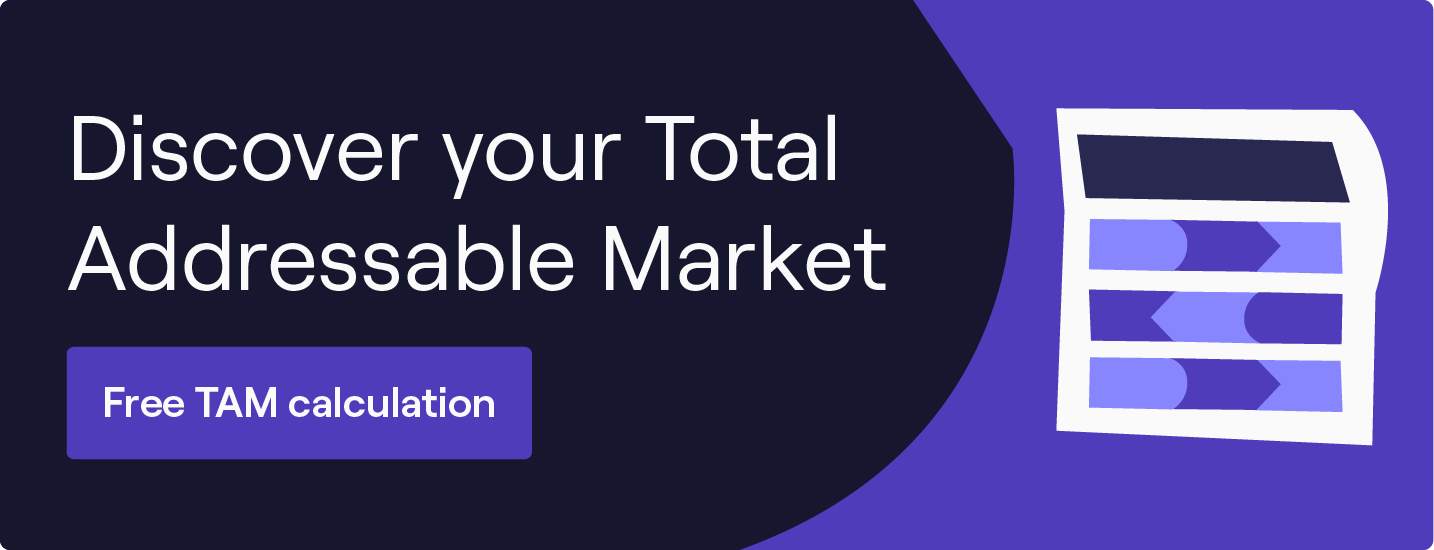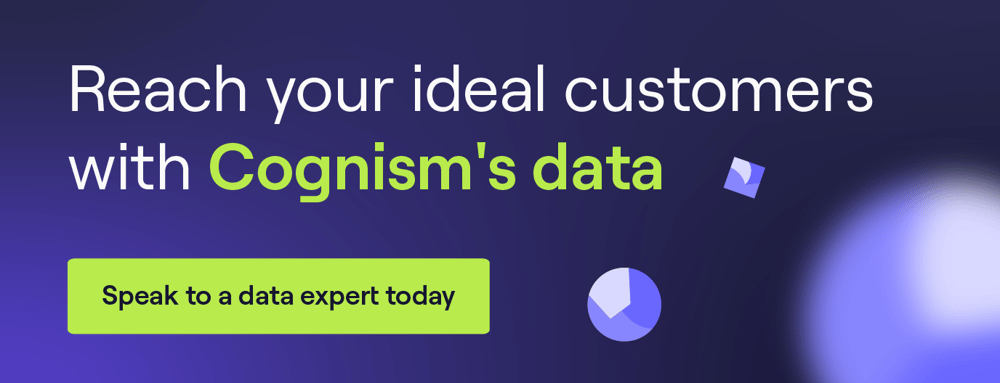What is Account Based Selling? Guide for 2026
Account based selling (ABS) is the hot craze everyone’s talking about.
Maybe you’ve heard that account based sales have much shorter sales cycles and can help you find better-fit customers, but you don’t want to limit your B2B target audience.
Maybe you want to learn more about this selling strategy in practice, or look for new ways to close deals.
Whatever path took you here, you’re in the right place.
In this guide, we explore how to achieve account based selling success, what benefits you can gain from an account based approach, and how to get started.
Let’s dive in 👇
What is account based selling (ABS)?
Account based selling is a strategic approach to B2B sales that targets high-value accounts by identifying and engaging with key decision-makers within those accounts. The sales team understands why people buy their product and uses this information to draw up a list of ideal customers.
They then focus on selling to these target accounts. This involves creating personalised and customised outreach for each account, and helps build stronger relationships with potential customers.
Account-based selling vs traditional sales
Traditional sales relies on volume. The more calls made and leads added, the better the odds of hitting target. The problem is obvious: too much time wasted on poor-fit prospects, lower conversion rates, and lengthier cycles.
ABS takes a different path:
-
Traditional sales: quantity-driven, transactional, short-term.
-
Account based sales: quality-driven, relationship-focused, long-term.
Here, performance is judged by the depth of engagement in each account rather than the number of activities logged. Sales reps are not pitching strangers; they are guiding qualified companies with solutions matched to their priorities.
A common concern is that narrowing the funnel means fewer opportunities. In practice, account based selling delivers a higher return per account, offsetting the smaller volume.
Account based selling vs account based marketing
Account based selling and account based marketing are often confused because both target accounts instead of individuals. The distinction lies in ownership:
-
ABM is marketing-led. It uses campaigns, content, and events to attract and nurture accounts at scale.
-
ABS is sales-led. It centres on one-to-one outreach, relationship-building, and closing business.
They are complementary. ABM creates awareness and engagement; ABS converts that interest into long-term revenue.
So, who should use account based sales?
Account based sales is best used where businesses hit these criteria:
- The deals are high-value, such as enterprise accounts.
- Buying committees are complex with multiple stakeholders.
- Sales cycles are longer.
- Cross-sell and upsell opportunities exist and make the sustain time investment worthwhile.
- Teams such as marketing and customer success can align with sales fully.
- Data and tools are available to help, such as sales intelligence or enriched CRM data.
Benefits of account based selling
Account based selling has many benefits that can help businesses achieve sales goals.
The number one benefit is control over your customer base. An account based selling model will give you complete control over who your sales team is selling to.
Some of the most significant benefits include:
- Higher conversion rates - Since an account based selling approach targets high-value accounts, the conversion rates are higher when compared to other sales strategies.
- Increased revenue - Businesses can generate more revenue by targeting key accounts, as they have a higher potential for sales.
- Improved customer retention - Businesses can improve customer retention rates by building stronger customer relationships through personalised outreach and ABM engagement.
- Better alignment with marketing - Account based sales align well with marketing efforts, allowing for a more focused and targeted approach towards customer acquisition.
An account based selling strategy also makes a big impact on the potential efficiency of your sales team. They’ll benefit from:
- Fewer ‘not interested’ responses.
- Confidence that the product can help the customer.
- Personalised and thoroughly researched outreach.
- A shorter sales cycle.
Lastly, your company will benefit from a less spammy outreach.
Positive and negative customer journeys are regularly shared and discussed across social media, so speed-dialling huge prospecting lists with an underprepared proposal can significantly damage your brand image.
On the contrary, being involved in more positive conversations will improve your company’s reputation and generate more direct demand.
So why isn’t everyone doing account based sales?
There’s a fear that getting too narrow with your targeting could:
- Negatively impact your revenue.
- Become a problem when you’re unable to break into your target accounts.
Unless your business model involves a rapid sales cycle and small margins on every deal, you can solve the first problem with a larger target account list.
You’ll need a better approach to account based selling to resolve the second issue.
How you can do account based selling in four easy steps
ABS is a lot like account based marketing. There are four steps to follow for the best success: identifying target business accounts, creating outreach, prospecting, and measuring ABM metrics.

Let’s break them down:
1. Identifying target business accounts
The first step is to identify high-value accounts that have the potential to generate significant revenue.
You’ll need a highly accurate ideal customer profile to do this. It’s an essential step, so make sure you get this right. Here’s a checklist to ensure you understand your ICP:
- Understand the problems your product solves.
- Understand which companies and people face these problems.
- Understand which companies can afford your product.
- Look at your current customers to find commonalities.
- Ask your customers why they use your product.
- Looked at your competitors’ current customers and targeting to find commonalities (if possible).
- Do a top-down analysis, or use a prospecting tool, to determine the number of target accounts in your total addressable market (TAM).
If you need help calculating your TAM, Cognism has a free TAM calculator 👇
Use these parameters to start building a list of target accounts. If you’re struggling to find more target companies to add to the list.
Be strict with the target account list. You can always open up your targeting later if you need more accounts.
Consider their potential value when you add companies that fit your ICP into your target account list. Prioritise the accounts that could add the most value to your business.
💡You might find our account based marketing template helpful.
2. Research and create customised outreach
Narrowing down your target audience is useful but comes with a caveat. You need to be thorough with your research.
You can’t afford to go into every sales call with the same phone script, or you’ll quickly burn through your target list. And it’s the same with your cold email templates. You need personalised messaging that resonates with potential customers for the best results.
Plan every conversation and every bit of outreach for your ABM funnel. Think practically about how your product could help the target account. Prepare some examples or case studies of similar companies that have benefited from your product already.
Go into every call feeling as prepared as you would with an existing customer. This will help build stronger relationships and lower churn in the long run.
Sure, this is additional work, but it’s the value of any account based selling strategy. You can bring your A-game to every pitch without wasting time on bad-fit prospects.
3. Prospect key decision-makers
Once you’ve built your list and created the perfect sales scripts and cadences, you can start prospecting.
Ask yourself:
‘How can I start having discussions with the decision-makers and end-users at these companies?’
Here's a quick video that explains how as well. ▶️
LinkedIn is a great place to start, but InMail can be oversaturated and easily ignored. Use an account based selling tool like Sales Navigator and Cognism’s Sales Companion Browser Extension to find the profiles of the right decision-makers from your target accounts and their mobile numbers for a researched cold call.
It can be frustrating when you just can’t break into a target account, which is why Cognism offers a Diamond Data®, which helps to connect you with up to 87% if your target account list.

4. Metrics that matter for ABS
For your account based selling strategies to work, you must consistently track your campaigns' success. By measuring the successes and failures of your ABS and ABM campaigns, you can optimise your outreach strategies based on the results.
Some of the account based sales metrics to measure are:
- Account engagement score.
- Cost per account engagement.
- Pipeline velocity.
- Deal expansion revenue.
- Retention / Net Revenue Retention (NRR).
Account sales strategies
We’re sure you’re already an expert sales rep if you’re committed to reading B2B sales articles like this one. However, there are still a couple of tactics for account based selling which differ from traditional sales:
1. Multi-threading
Multi-threading is the process of interacting with several stakeholders from the same company, and it’s another possibility that arises when you spend more time on each account.
The value of multi-threading is two-fold:
First, without focusing all your attention on the key decision-maker or first contact at a company, you’ll be more likely to interact with a contact who believes in your product and will help you sell it internally.
Second, by speaking to multiple contacts at a company, you increase the likelihood of internal conversations about your product. These conversations are sales dynamite and a great example of how sales can influence the dark funnel.
2. Keep it friendly
We’ve already established that these accounts are a good fit for you. You don’t want to start burning bridges or being too pushy if they’re not ready to buy. The fact that you’ve had a friendly conversation means you’ll be first in line when they decide they need a product like yours.
Go into these conversations aiming to educate, help and listen.
And know when to pull back. If you push too hard for an account based sale, you could push the account away.
Account based selling key takeaways
The implementation of an account sales strategy isn’t brand new. It’s been around since the early ’90s. But recently, with technological advancements, it has offered a realistic alternative to traditional sales.
There’s nothing wrong with conventional sales. You might not need a change if your market isn’t saturated and people respond well to your outreach.
But there may be a problem. The availability of massive automated email campaigns and speed diallers has changed the perception of outbound. People are getting frustrated with sales outreach that doesn’t feel personalised.
If you’re often cold calling prospects with little to no research and hearing sales objections like ‘sorry, this isn’t for me,’ you might benefit from a more targeted, account based approach.
If you’re often cold calling prospects and hearing a string of expletives, you’re dealing with an oversaturated market and an audience frustrated by salespeople.
If either of these problems sounds familiar, an account based selling model could be your solution.
Successful ABS happens with Cognism
Start creating your account based selling success stories with the help of Cognism - the leader in international sales intelligence.
Its GDPR-compliant data allows you to:
- Calculate TAM and explore your ICP.
- Gain access to ABM data such as accurate business emails, mobile numbers, and social handles.
Plus, a whole lot more!
Cognism is the account based selling platform for you. Click to book a demo today 👇


/Cold%20calling%20strategy/cold-calling-strategy-card.webp)

